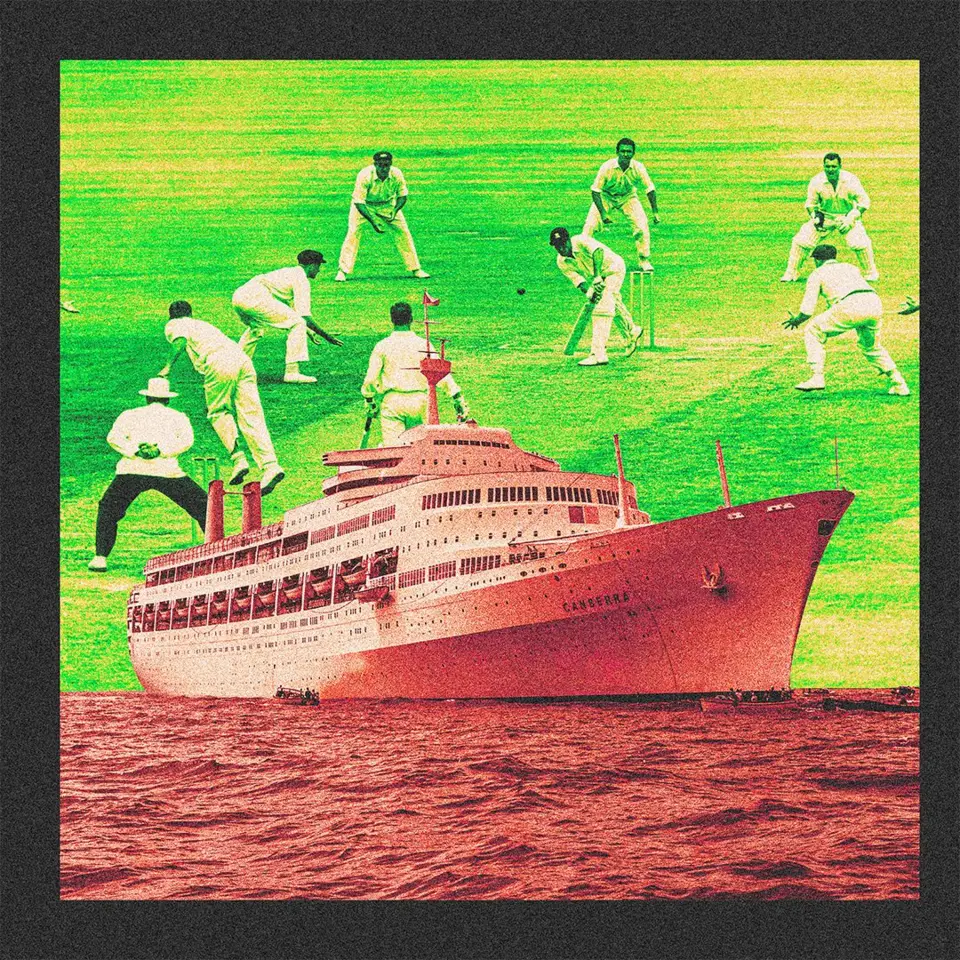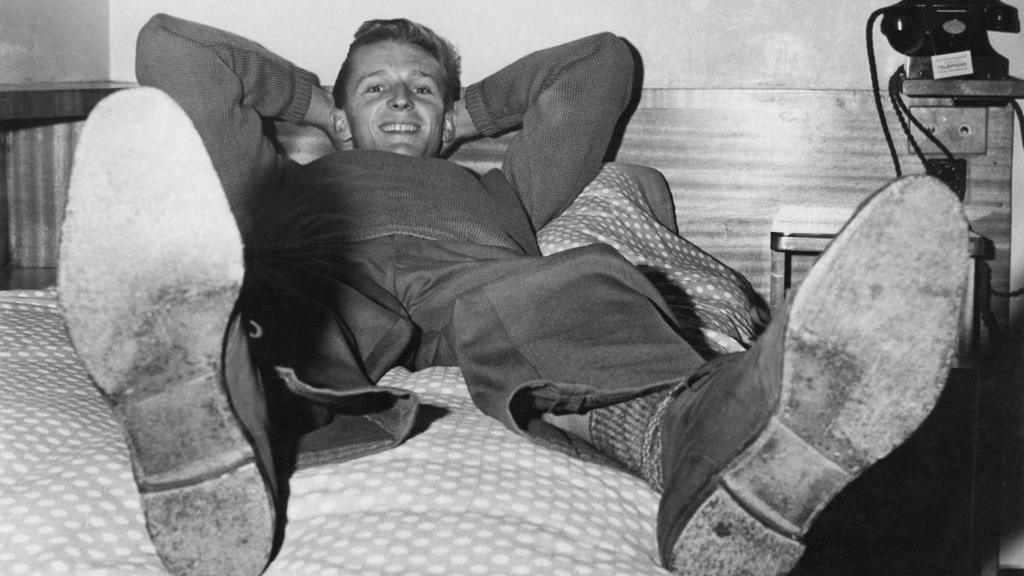
Sea Legs and Stiff Upper Lips: When England Sailed to the Ashes
From ships and seasickness to camaraderie and cricket – a forgotten era of Ashes journeys
There’s something almost romantic about the Ashes — two nations, 10,000 miles apart, bound by a rivalry that has shaped cricket for more than a century. Today, England’s cricketers jet off to Australia in the lap of luxury — reclining seats, business-class beds, protein-packed meals, and streaming services on tap. But rewind six decades, and the voyage to the Ashes was an entirely different adventure — one taken by ship, not plane.
For David Larter, a tall, young fast bowler making his first overseas tour in 1962, that journey was nothing short of “a dream.” Speaking to the BBC at the age of 85, Larter remembered the experience vividly. “You enjoyed being on a huge ocean liner like that, and the life it afforded while you were on there. It was out of this world,” he said. “By the time we got to Perth, we had a coherent unit, ready to move as one.”
It’s hard to imagine today’s England squad — Ben Stokes, Joe Root, and the rest — swapping Emirates lounges for a ten-day voyage across the Indian Ocean. But for Larter and his teammates, that was part of the Ashes magic.
Setting sail for destiny

David Larter england
The 1962–63 tour wasn’t quite the grueling odyssey of earlier decades. England flew as far as Aden, before boarding The Canberra for the final stretch to Australia — “just” ten days at sea, as Larter put it. Still, it was a world away from modern cricket’s pace.
At only 22, Larter was the youngest member of Ted Dexter’s squad, which also featured giants of the game like Colin Cowdrey, Fred Trueman, Brian Statham, and Ray Illingworth. England were desperate to reclaim the Ashes after losing 2–1 at home in 1961, and this trip was their chance to put things right.
The team assembled in London in late September, a full two months before the first Test in Perth. After a flight to Aden — and a chaotic encounter with local traders — the players boarded their ship. Among them was legendary BBC commentator Brian Johnston, who, in typical fashion, managed to haggle with a shoe vendor over the price of just one shoe. It set the tone for a journey filled with laughter, luxury, and a touch of eccentricity.
Life aboard The Canberra
How do you prepare for an Ashes series when your “training ground” is a cruise ship? You eat, apparently.
“In my case, you eat,” Larter laughed. “Honestly, I’ve never had such a sustained spell of magnificent eating. The stewards loved us — they’d bring these great trolleys of food, and they knew we’d eat it.”
To balance the indulgence, there were makeshift workouts — badminton courts netted off on deck, morning exercises, and even weights sessions. But then came an unexpected twist: the arrival of Gordon Pirie, Britain’s Olympic silver medallist in the 5,000m.
Pirie, who happened to be travelling on the same ship, was asked by Dexter to help the squad with fitness training. His solution? Running laps around the deck.
“It’s quite a long way around one of those big boats,” Larter recalled. “But I did what I was told.” Not everyone was so obedient. Fred Trueman, the fiery Yorkshire fast bowler, had already bowled over 1,100 overs in the English summer. He flatly refused. “Fred said he wasn’t running around a boat for anyone,” Larter chuckled. “The Gordon Pirie thing died off after that.”
Meeting the emigrants
For Larter, who’d never left Britain before, life on the ocean was an education. The England players were travelling first-class, sharing space with “old millionaires taking in a bit of sun,” but he was drawn below deck, to the emigrants bound for new lives in Australia.
“We found the greatest reception came downstairs,” he said. “There were people emigrating for all sorts of reasons. A lot of them were young, out to make new lives. There were more than a couple of decent bars, and you could have a quiet pint.”
Those evenings — beer in hand, laughter filling the corridors — forged a bond that no plane ride could ever replicate.
The land legs that wouldn’t work
When The Canberra docked in Colombo for a warm-up match, the players got their first taste of solid ground — and for Larter, it didn’t go well.
“I marked out my run, ran in, and fell flat on my face,” he recalled with a grin. “Then I got up and did it again. I’d lost my land legs. They just didn’t work.”
Captain Ted Dexter took one look and promptly took him off. Larter’s over was finished by Barry Knight. “We were entertained by the British Army after that, with a big barbecue on the beach. For a lad from Suffolk, it was an eye-opener — just being there was surreal.”
The Duke and the bowler
If the voyage wasn’t strange enough, the squad’s tour manager added another layer of old-world charm: Bernard Fitzalan-Howard, the 16th Duke of Norfolk.
“You had to respect the fact he was of royal descent,” Larter said. “In the morning it was ‘your grace,’ later in the day it was ‘sir.’ He surprised us with his knowledge of the game and even invited us all to dinner, two players at a time.”
Not everyone was impressed, though. Fred Trueman complained the media were more interested in the Duke’s horses, Reverend David Sheppard’s sermons, or Susan Dexter’s fashion than the cricket itself. It was, as ever, a very English mix of class and contradiction.
Cricket, camaraderie, and Christmas on the beach
Back then, Ashes tours were marathons. England played nine warm-up games in six weeks before the first Test, and 22 matches in total across Australia. There was no popping home for Christmas, no phone calls to family — just the occasional telegram and a stack of newspapers delivered days late.
Larter remembers his £1,250 tour fee — the equivalent of £23,000 today — as more than enough to enjoy himself. “I got offered three jobs while I was there,” he said. “I almost thought, ‘This is the place for me.’”
Christmas was spent on the beach, another surreal moment. “It was a surprise to find the Australians celebrated Christmas as much as we did — just in a different way.”
But the fairytale had its frustrations. Despite his pace and bounce, Larter never made the Test XI in Australia, stuck behind Trueman and Statham. England went 1–0 up in Melbourne but couldn’t press home the advantage. Two draws meant the Ashes stayed Down Under.
The end of an era
Larter did eventually get his reward — seven wickets in the first Test of the New Zealand leg that followed, helping England win that series 3–0. But by the time he returned home in March, the county season was already looming.
He would tour Australia again in 1965–66, this time by plane, but injury curtailed his career soon after. He drifted away from cricket, choosing instead to join his father’s haulage business in Wales.
Now, looking back, he still treasures the memory of that 1962 voyage. “It was unbelievable,” he said. “Apart from not playing, I had the time of my life.”
The modern cricketer might struggle to imagine spending ten days at sea before facing Australia. But for men like David Larter, the journey was the making of them — a rare blend of adventure, discipline, and discovery. It wasn’t just the start of an Ashes series. It was the start of a lifetime of memories — and the end of an era when England’s cricketers truly had to earn their sea legs.
























There are no comments yet. Be the first to comment!